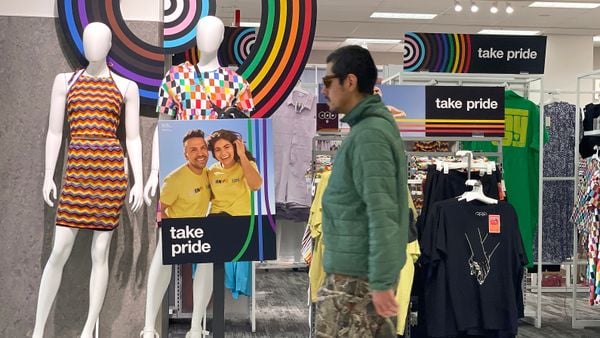Supply chain disruptions have dogged brands for much of 2021, and are set to continue through the holiday season and into 2022. These challenges are being exacerbated by the accelerated shift to online shopping and labor shortages that have been dubbed the Great Resignation.
While some advertisers have cut budgets as much as 50%, there are several tactics and strategies that marketers can employ to adapt to the continued challenges, according to a Merkle report emailed to Marketing Dive.
The report, "Adapting Media in the Face of Supply Chain Disruption," distinguishes upper-funnel and lower-funnel marketing programs. The former are geared toward awareness, engagements and consideration, and are longer-term brand efforts that are less affected by supply chain challenges.
That's not the case for the latter: Direct-response programs that are geared toward product and service sales and are being stressed by prevailing economic factors. However, these digital media programs allow for advertisers to intervene, explained Merkle Senior Manager Marion Gendron, who authored the report.
"It's really a matter of pulling various optimization levers for that lower funnel to really take a very granular and personalized experience to serve those users and their moments of intent within the business constraints," Gendron said.
Levers to pull
Chief among the levers available to advertisers is riding the wave of online shopping that has accelerated during the pandemic. Advertisers can prioritize digital channels including search, programmatic and social that have better targeting capabilities and consumer intent signals, but must also determine the proper marketing mix by embracing customer relationship management (CRM).
"Understanding how users engage with the brand in these digital touchpoints across their total journey in their ultimate path-to-purchase [informs] which audience segments are best placed and iterated across these channels," Gendron said.
However, increasing segmentation across audiences can inflate the costs of programmatic and social advertising, making it imperative to understand digital trends within the channel and how they affect brand objectives. For example, a key trend is the preparation for a cookieless future and the increased collection of first-party data. Perhaps paradoxically, this moment could be an opportunity for marketers to further embrace first-party data, despite the challenges.
"Being able to get really crafty and working directly with your agencies and their proprietary identity resolution products will be a huge asset to advertisers here. The more that they can identify different subsets of active customers, prospects [and] everybody else in between, the smarter and richer the data will be," Gendron said.
The crunch of the holiday shopping season drives other tactics available to advertisers. Creative should be personalized based on user behaviors and brand imperatives, with messages that speak to urgency and timing, per the report. As holiday sales may be less competitive than previously, brands must differentiate themselves and be sure to secure media coverage during promotional dates while supplies last. Brands can also shift toward advertising gift cards when facing product shortages.
The Amazon shift
More significantly, advertisers must modify user experiences to accommodate changing consumer behaviors. Even before supply chain challenges came to the forefront, brands were vulnerable to losing younger consumers who are less tolerant of poor digital shopping experiences, per a study by digital experience management software company Sitecore. The need for advertisers to meet consumers where they are has only increased during the pandemic.
As an example, the report suggests a CPG brand might have to shift resources from direct-to-consumer to Amazon, two different experiences that contribute to the overall brand and its relationship with users, Gendron explained. Consumers have continued to flock to the e-commerce giant during the pandemic, fundamentally changing how they purchase products. When digitally purchasing items, more than half of U.S. adults began product searches at Amazon, compared to 23% via search engines and just 16% by brand and retailer websites, per ChannelAdvisor data cited by eMarketer.
"There's something to say about the user journey perhaps beginning or being more heavily rooted in Amazon than Google, [especially for advertisers] that grew up in the world of media or grew up in the trenches of search," Gendron said.
Even if and when supply chain disruptions diminish, other challenges will emerge for advertisers as consumer behaviors continue to evolve. When looking ahead to 2022, Gendron suggests marketers continue to increase CRM adoption and integration across precision media to serve direct-response ad programs, and understand how to balance their P&L to find the flexibility to balance upper- and lower-funnel needs.
"Performance is certainly the most impinged when we're thinking about hard goods and those being at the mercy of supply chain disruptions," Gendron said. "[Marketers must] understand more about the brand's position in the marketplace, from maturity and sentiment perspectives, and how the full funnel needs to be fully satisfied."




















